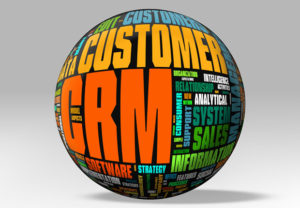Looking at the current assortment of customer relationship management functionality, including artificial intelligence, machine learning, voice recognition and chatbots, you might conclude that the tools are evolving to remove salespeople and others from direct customer contact — and you wouldn’t be wrong.
What’s surprising to me, though, is the amount of sales angst among senior people about the division of salespeople’s time into two traditional buckets: selling and not selling. One is good and valuable and the other is suspect. But why?
Research has shown that customers like finding their own answers without the assistance of someone whose job is to sell. Selling comes later, once a customer has a good idea of basic needs and available solutions. Before this point assistance can seem heavy handed.
It makes sense to let customers do what they do. Organizations implicitly agree, because they put so much information on the Internet to support the self-service effort.
The Timing Conundrum
The result is that salespeople engage with customers further along in the process or down the funnel. This puts added responsibilities on salespeople.
For instance, when sellers met customers earlier in the process, it was easier to have more customer meetings to simply deliver basic information. Managers didn’t like that so much; the probability of closing a deal was relatively low, given that customers still had to go through a mental process to make a decision.
So, what did we do? We positioned all that information on the Internet to enable customers to make their own determinations. That’s great, right? No, no, no! Now the complaint is that salespeople are not spending enough time in front of customers.
Last year’s Salesforce report, “The State of Sales,” showed graphically that about one-third of a salesperson’s time during an average week was spent selling and the rest doing what many deem wasting time. That can get you scratching your head.
The report included as selling activities like meeting customers in person, connecting with customers virtually, prospecting, administrative tasks, and preparation and planning. This all seems abundantly reasonable.
But look at what it included as non-selling activities: generating quotes and proposals, gaining approvals, researching prospects, attending internal meetings and training, manually entering customer/sales info, prioritizing leads and opportunities, and downtime.
Preparation Is Critical
A few years ago, I recall reading another report, either from Forrester or IDC, and I apologize for not knowing which, but my point is simple. The report surveyed CIOs, and one finding was that sales reps were not adding enough value.
They weren’t following up appropriately, didn’t come to meetings prepared to advance a discussion from the last meeting, etc. My takeaway when I read that report was that reps had too many accounts and not enough time to do the spade work necessary to drive a meeting and push a sales process along.
When I was selling, it was a rough rule of thumb that for every one-hour meeting you might need three or four (or more) hours of preparation. That was largely before CRM began giving reps back some of their time. In this context, the current selling and non-selling time appropriation looks pretty reasonable to me for a couple of reasons.
First, modern CRM has reduced the amount of preparation time significantly (but not to zero). Analytics might be able to tell you the next logical step but so can an experienced salesperson, and the real challenge is in doing the work for that step.
There’s good news there too. For instance, modern CPQ (configure, price, quote) can produce errorless proposals and get the necessary approvals as quickly as a sales rep can get a manager to check email. You can say the same about presentation tools and slide libraries and almost every phase of selling that involves some amount of automation.
Somebody actually has to use the systems, though, and do the preparation. That sounds like non-selling, but I’d advise that we reconsider our definitions.
The fact that customers encounter salespeople for the first time further down the funnel means there’s more at stake in that meeting than back when a salesperson could fire off generalities. Having more at stake requires better preparation. If we want our salespeople to be consultative and not glad-handers, they have to come locked and loaded.
My Two Bits
I’m not saying there’s no room for improvement — just that we need to be smart about what we value and how we see the modern sales process. I guess I don’t get it when I see or hear sales pros lamenting the 2:1 relationship between preparation and face time. To me that seems pretty good.
It could be better, and maybe in 10 years it will be, but it’s worth noting that as products commoditize, customers need less attention from salespeople, and that at some point many products go from employing a direct sales model to more of a retail model.
That’s especially what we’re seeing all over the tech sector today, and it will proceed differently from business to business based on things like product complexity, customer receptivity and, of course, competition.
























































